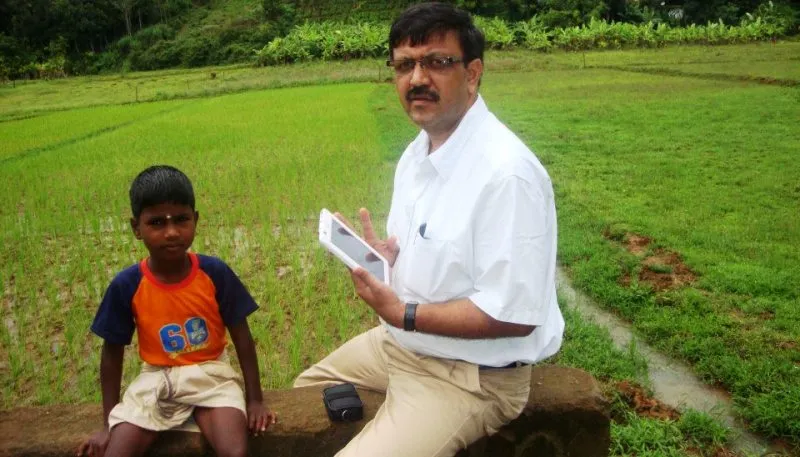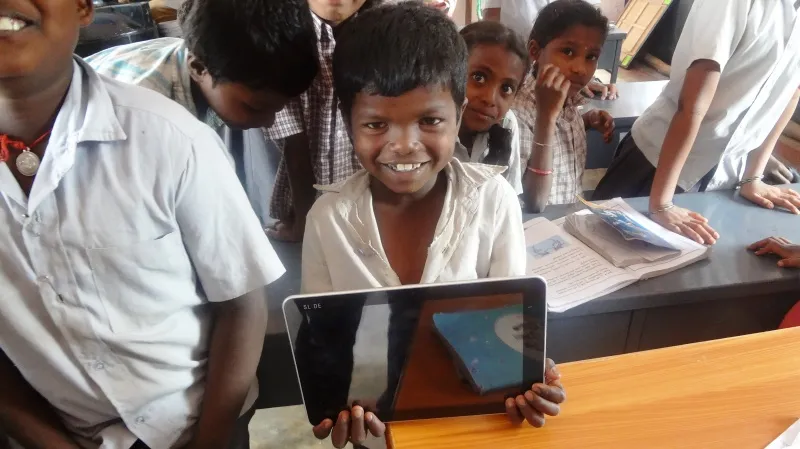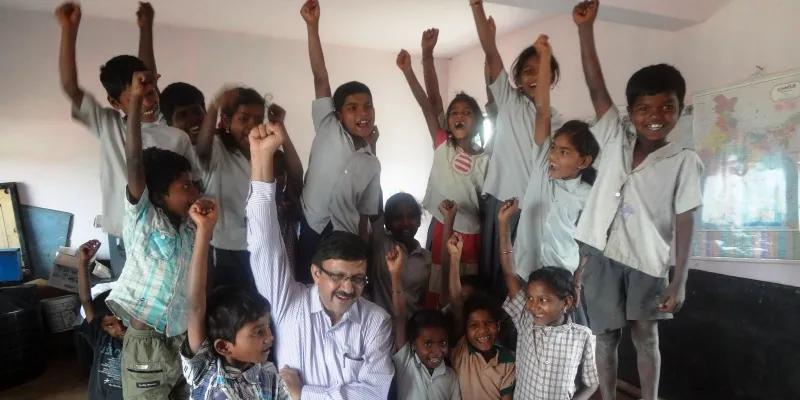'If we can work where the tigers are we can work anywhere' GuruG on improving quality of teaching in any type of school
“In the past two decades, there have been many complaints about the quality of teaching globally,” says Shivananda Salgame, co-founder of GuruG. “Yet,” he continues, “we thought there’s no point in blaming the teachers. Let’s think [of] how to empower them!” The team travelled around the world to research education through the accelerating programme Unreasonable at sea. It allowed them the chance to draw a clear picture on international trends in education. “The core of the global debate is that the method of teaching, rather than the content, has to change.”

GuruG provides a gamified platform for school teachers to improve the quality and impact of their work. It works through an adaptive teaching algorithm, which provides teaching packs that vary according to the curriculum and cultural context the teacher operates in. “It is an Android and tablet-based solution where the teacher selects the topic, and a complete set of lesson plans come out. The lesson plans can be used selectively according to what the teacher thinks students need for that topic in that situation (pictures, video, or audio),” explains Shivananda.
Users that GuruG targets are BoP schools.“We wanted to launch the product in a place where technology had never been used before, and where English is not spoken. If we managed to make it work in these conditions, we’d have better chances to succeed anywhere else.”
To make it even more adventurous, the team’s pilot projects in 2012 were carried out in wildlife reserves in Bandipur, Karnataka and Madhumalai, Tamil Nadu, where they worked with 50 schools.“We conducted workshops with the teachers who were all pretty comfortable with the technology. Also, we managed to have the content translated in Kannada and Tamil thanks to collaboration with NGOs, local teachers and local government,” says Shivananda. He continues, “The project was very successful, because our two simple fundamental objectives were matched. First, teachers accepted the technology we introduced and, second, they quickly got into the habit of using it every day.”

Later, GuruG established collaborations with schools in Maharashtra, Madhya Pradesh, Rajasthan, and Pondicherry, interacting with over 1,000 teachers. The content is structured around six parameters: structured thinking, logical reasoning, problem solving, communication, collaboration and creativity.
Shivananda says, “A textbook teaches you what to learn, but not how. These six points, on the other hand, focus on the teacher’s skills to deliver content.”
Through this approach, GuruG directly addresses the question of why we need a teacher. Shivananda argues that teachers are fundamental; however, projects like School in the Cloud – which won the Ted Prize Award in 2013 for its innovative educational approach based on self-learning through technology – point out the importance of independent learning. Still, Shivananda maintains that“assimilation of information normally happens through a facilitator. It doesn’t need to be a teacher or a person, but something that helps dissolve confusion in the process of learning. I don’t think School in the Cloud will scale easily, because everything is self-taught requires extra talent.”
He goes on to say that, although teachers are necessary, encouraging a more autonomous approach to learning is pivotal. “Teachers are generally scared of encouraging inquisitive debates, because they are scared of not having the answers. We cannot force them to make their classes more challenging, but it is likely that through GuruG they’ll gradually take this direction, because they have a system that guides them in structuring a debate.”

So far, GuruG’s greatest achievements are increase in school attendance and drop in distraction among students in every institute they’ve worked. The team wants to reach 1,000 schools in the next year, and is preparing to expand to international markets, particularly Africa.
Financial sustainability, however, is still partially unstable because most of their activities are supported through donations, foundations, NGOs and CSR activities. Nonetheless, Shivananda says, “This year we’re planning to go commercial, and work directly with schools. Also, we’ve been evaluated by publishers worldwide who are keen to use our technology to top-end schools in different parts of the world.”
A second question is about the durability and safety of the devices, which are necessary to implement the GuruG software. Shivananda says that,“Safe-keeping of the equipment cannot be GuruG’s responsibility.” He mentioned that in a school where the tablet broke, the class had been able to collect money to buy another one. Yet, if devices used to implement the GuruG programs – like smartphones, tablets and projectors – break, some of the schools may not have the financial capacity and/or access to retailers to purchase new ones.

But despite challenges, the team gives a quite eloquent explanation of the impact their product can have when they tell us this episode: “One of our team members recently went to a school to check the impact. He said that he was there to take away the tablet the class was using for the GuruG program. He grabbed the device from the teacher and walked out. The children in the classroom all rose to run after him, and begged him to leave the tablet with them.” Together with a big smile, this brought about a very reassuring ‘service validation’.







